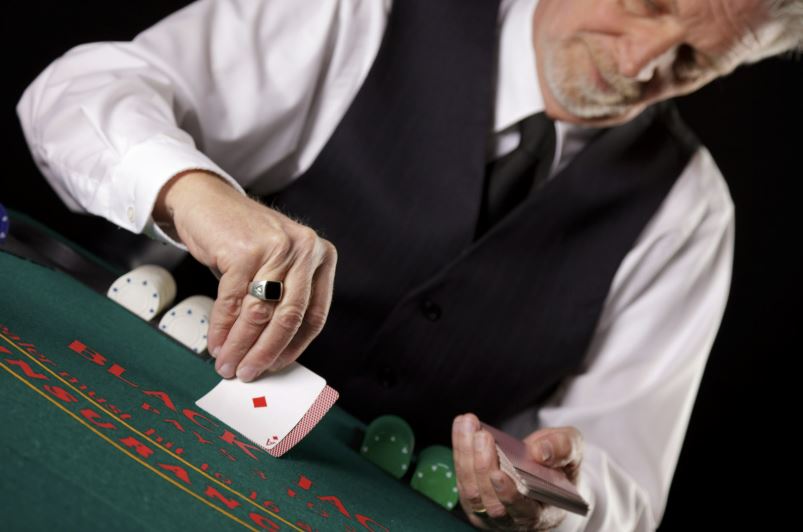
Blackjack is often seen as a game of pure chance, but seasoned players know that understanding the rules and strategies may have an influence on the outcome. Among the various nuances of the game, one important concept to grasp is the "soft 17." This term may seem technical at first, but it plays a key role in decision-making at the blackjack table, both for players and dealers.
Whether you’re new to the game or looking to refine your approach, knowing what this rule is will give you a better understanding of the game’s mechanics. Read on to learn exactly what a soft 17 means and why it matters.
Soft 17 VS Hard 17
In blackjack, not all hands totalling 17 are the same. A soft 17 is any hand that includes an ace valued at 11. The most familiar example is an ace with a 6, but other combinations qualify as well. For instance, a hand such as ace-3-3 or even a multi-card hand like ace-ace-2-4 may also be considered a soft 17, so long as the ace is counted as 11. What defines a soft 17 is its flexibility: if the total exceeds 21 after another card is drawn, the ace can shift from 11 to 1, avoiding a bust.
A hard 17, on the other hand, contains no ace, or the ace must be valued as 1 to prevent the hand from going over 21. Examples include hands such as 10-7 or 8-9. In these cases, the total is fixed, and exceeding 21 results in a bust.
The distinction between the two is important because it tends to influence typical playing strategy. In general, standard basic strategy charts indicate that a hard 17 is usually held as-is, whereas a soft 17 may often be played more aggressively, such as by drawing an additional card, due to the reduced chance of busting. This difference plays a key role in how players and even dealers approach decisions at the table.
Does a Dealer Have To Hit on a Soft 17?
Whether the dealer must hit on a soft 17 depends on the specific house rules of the casino. In some venues, the dealer is required to hit when holding a soft 17, while in others, they must stand. This rule can have an impact on the flow of the game and the odds.
In some venues, the dealer is required to hit when holding a soft 17, while in others, they must stand. This rule can have an impact on the flow of the game and the odds.
Fortunately, it’s usually easy to tell which rule applies at a given table. The blackjack table layout will typically include a clear statement, such as “Dealer Must Stand on All 17s” or “Dealer Hits Soft 17.” Players are encouraged to check this information before joining a game, as it can influence how hands are played and what to expect during a round.
Should You Hit on a Soft 17 In Blackjack?
Whether to hit on a soft 17 can depend on several factors, including the version of blackjack being played and the dealer’s upcard. A soft 17 offers more flexibility than a hard hand of the same value, as the presence of an ace counted as 11 reduces the chance of busting.
According to basic strategy, a player holding a soft 17 would typically hit in most situations. In multi-deck games, basic strategy charts often suggest doubling down when the dealer’s upcard is between 3 and 6. In single-deck games, the recommended range for doubling down may extend to when the dealer shows a 2 through 6.
If doubling down is not permitted or advisable based on the house rules or the game variant, basic strategy indicates that hitting is generally preferred over standing, particularly when the dealer is showing a stronger upcard, such as a 7.
That being said, ultimately, the decision is up to the player and their preferences. Always approach blackjack with responsible gambling practices in mind and never wager more than you are willing to lose.
Is It Better If The Blackjack Dealer Hits or Stands a Soft 17?
Whether the dealer hits or stands on a soft 17 can influence the overall odds. Statistically, when the dealer hits a soft 17, the house edge increases by about 0.2% compared to when they stand.
Standing on a soft 17 leaves the dealer with a weaker hand, while hitting offers a chance to improve to 18, 19, or even 21, potentially making it harder for the opposing hand to win or draw.
From a probability standpoint, rules requiring the dealer to stand on soft 17 are generally more favourable to the player over time. The rule in use is usually printed on the table, so it's easy to identify before a game begins.
Conclusion
Understanding what constitutes a soft 17 in blackjack, and knowing how to approach it compared to a hard 17, may influence how a player approaches the game. By grasping the nuances of these hands and recognising when to hit or stand, players can make more informed decisions that align with optimal basic strategy. While blackjack’s outcomes are significantly impacted by chance, knowledge of key concepts like this can add to the player’s understanding of the game and may lead to potentially better outcomes.
Remember, though, that gambling should always be done responsibly. It’s important to play for enjoyment and know your limits before you begin.
*All values (Bet Levels, Maximum Wins, etc.) mentioned in relation to this game are subject to change at any time. Game features mentioned may not be available in some jurisdictions.
**The information provided in this blog is intended for educational purposes and should not be construed as betting advice or a guarantee of success. Always gamble responsibly.
